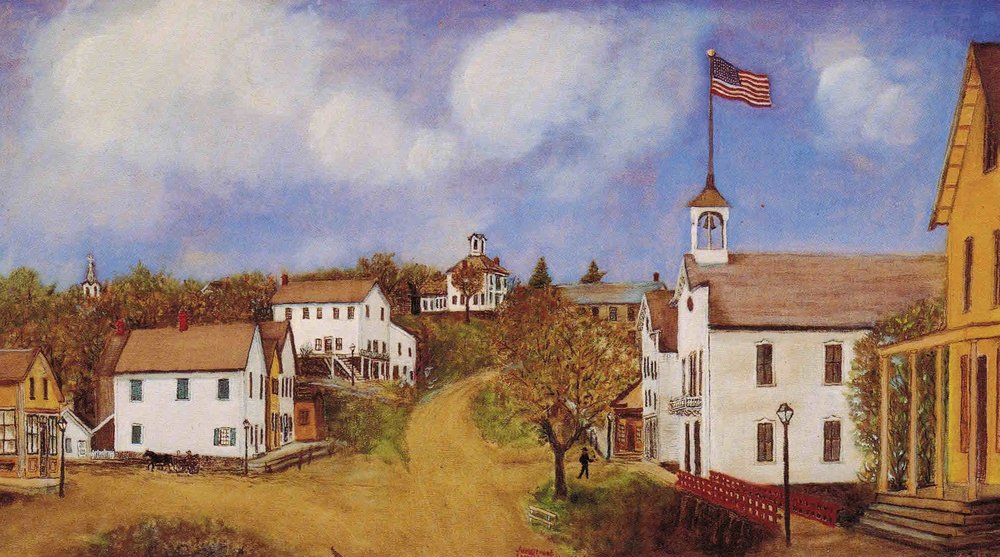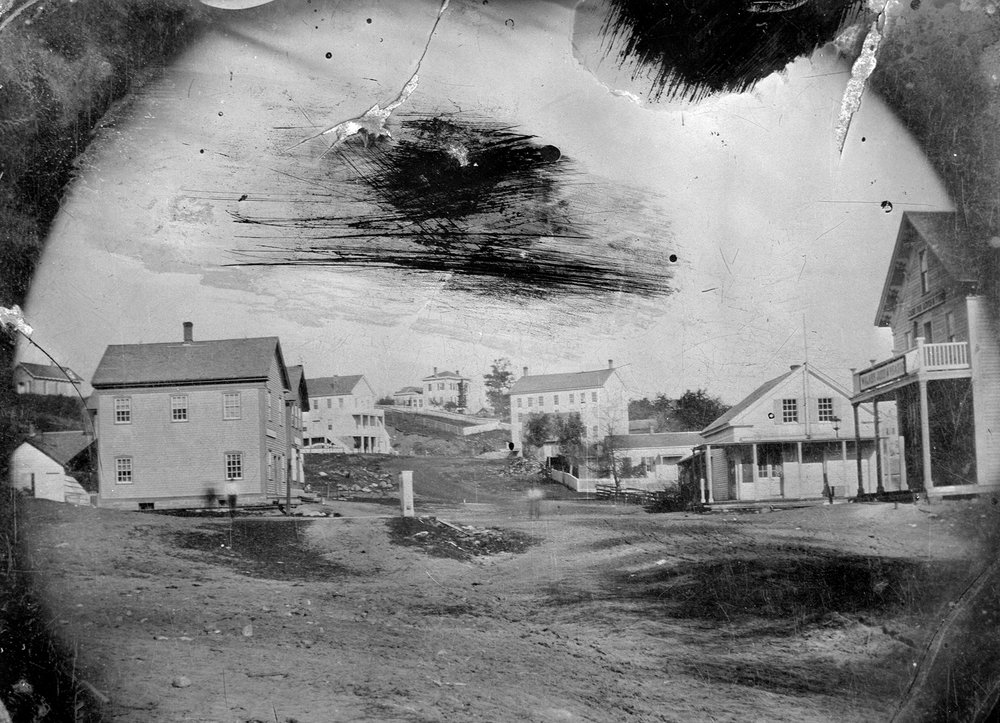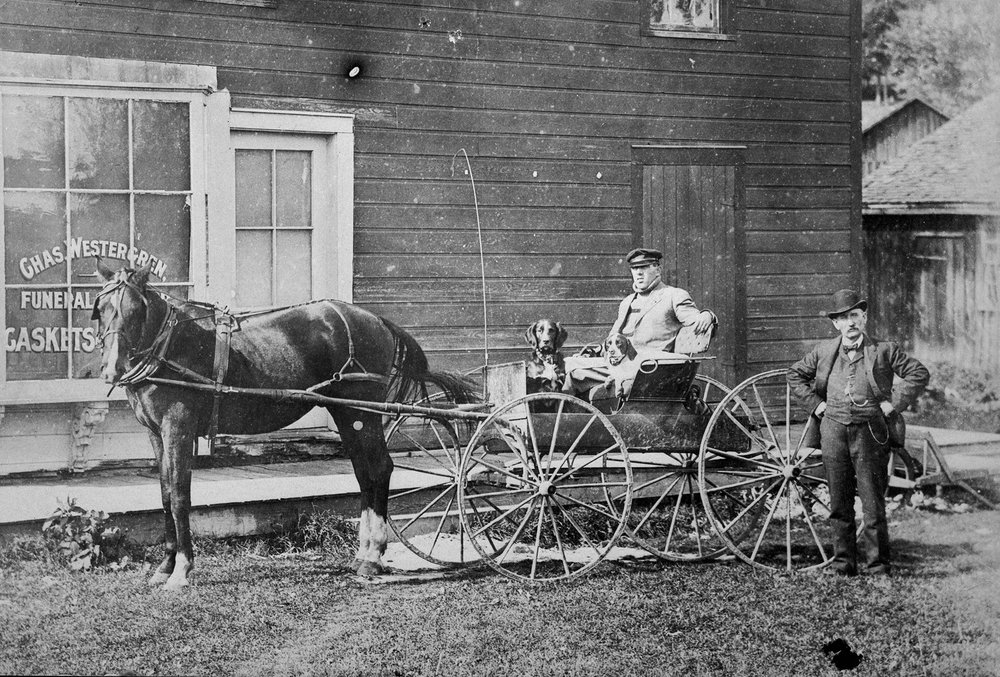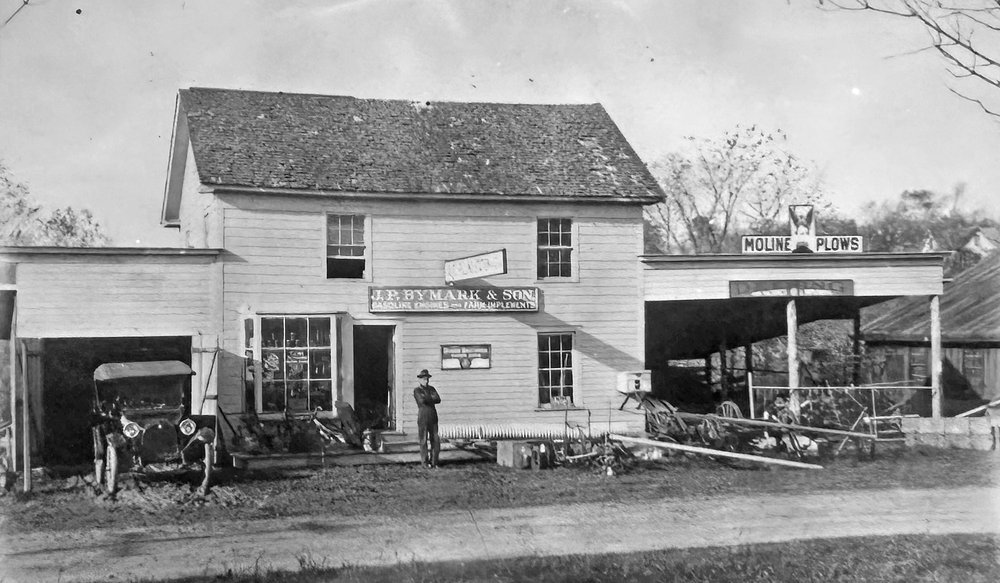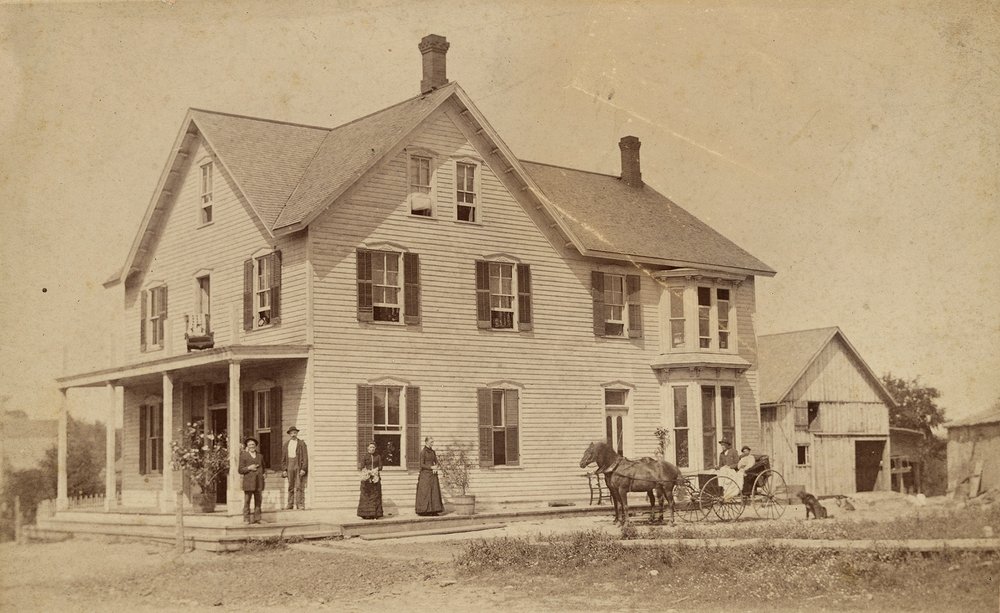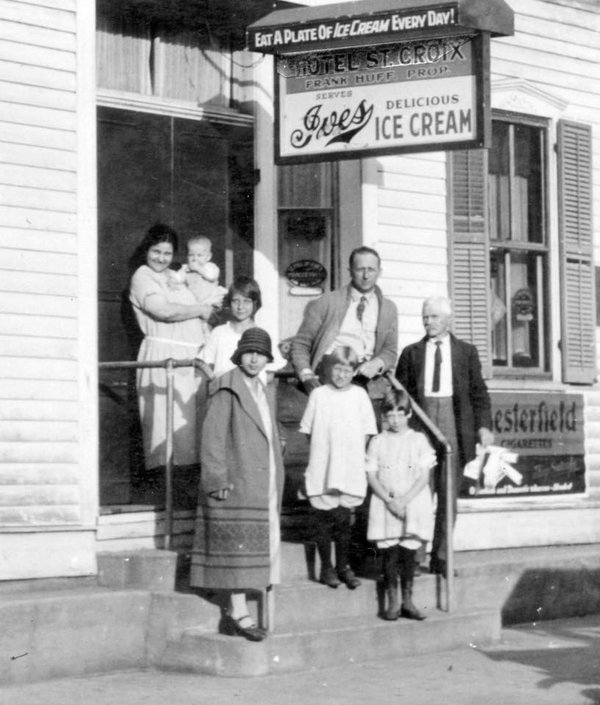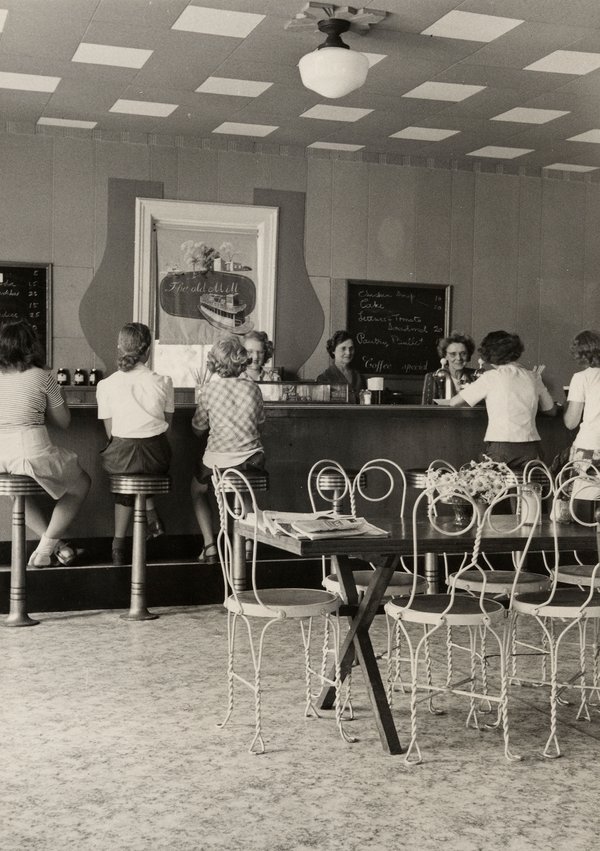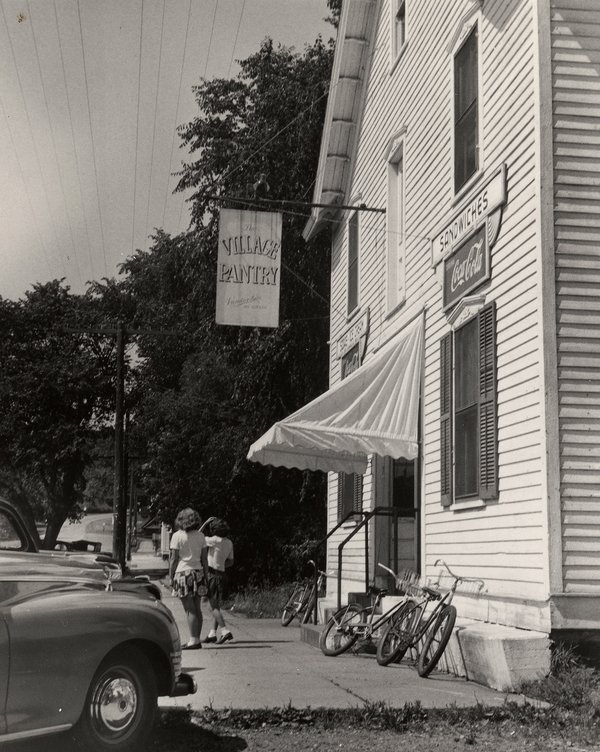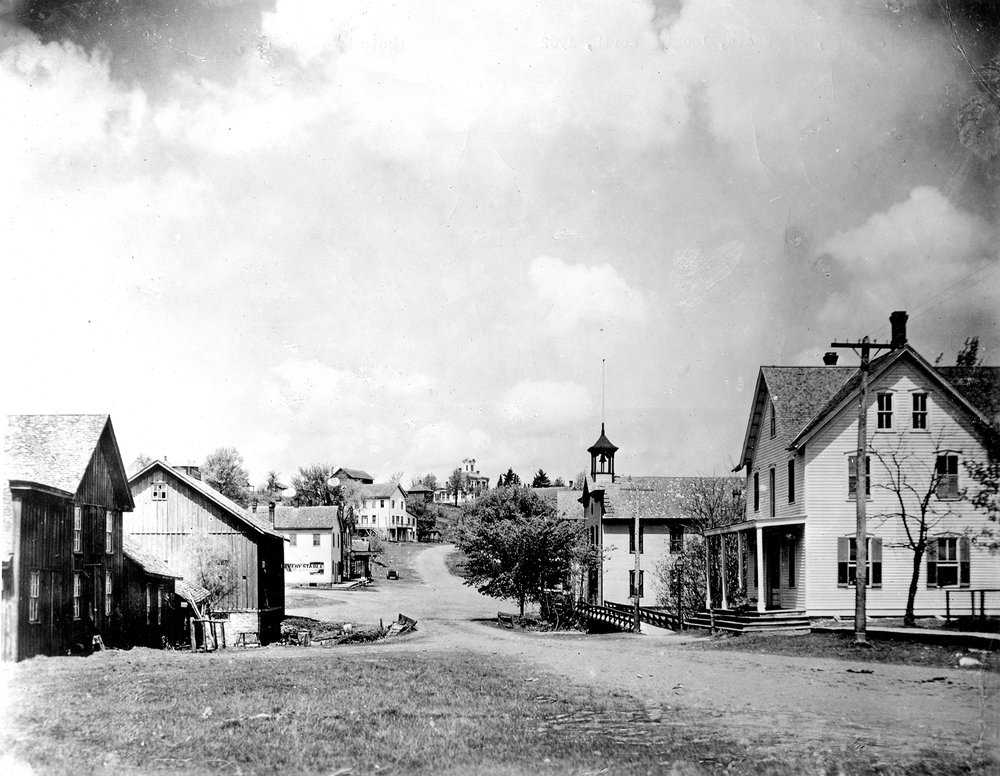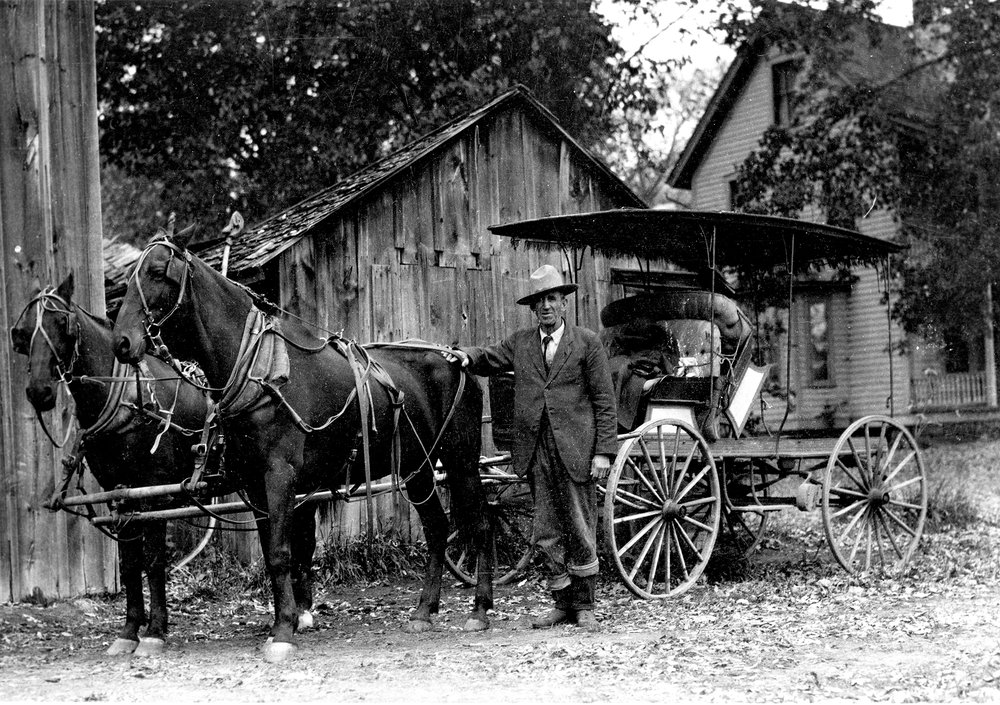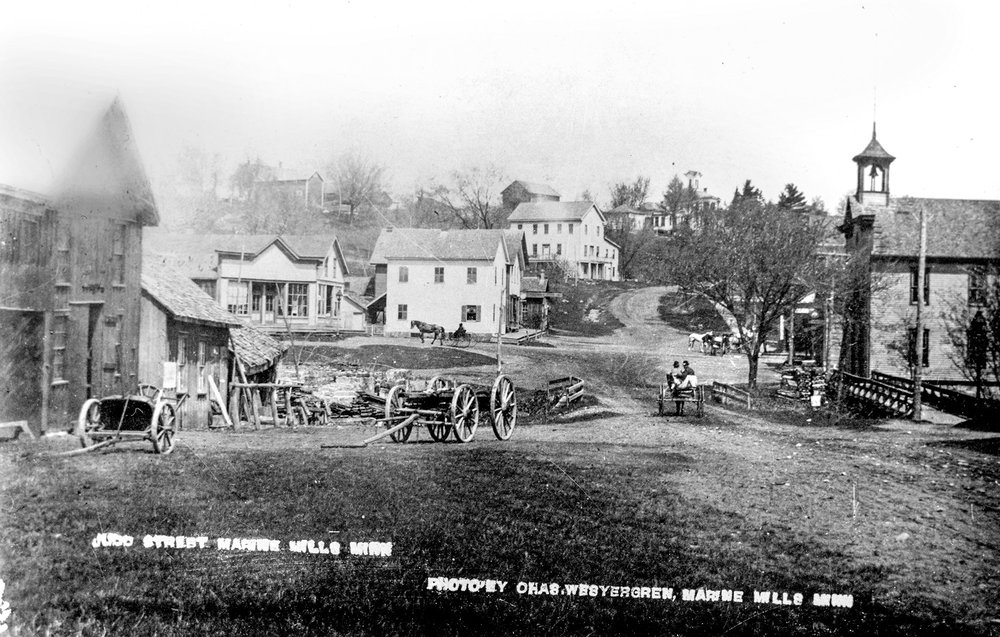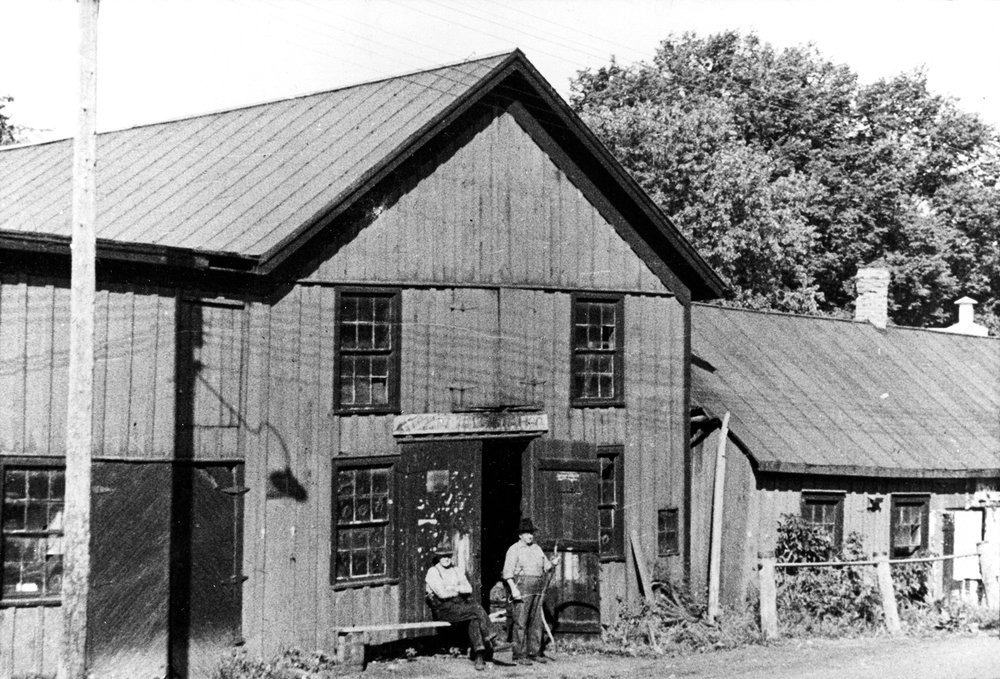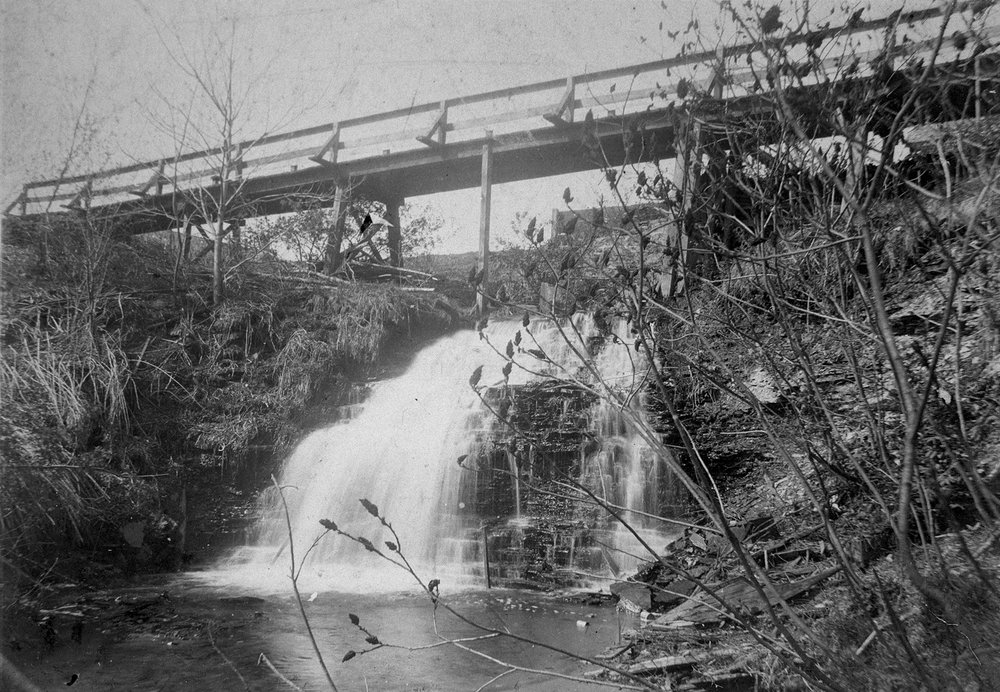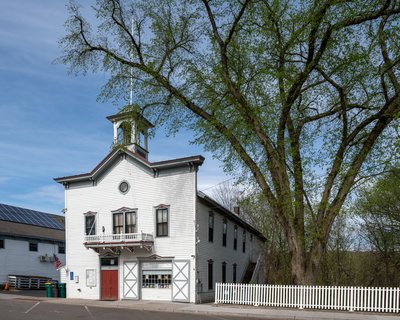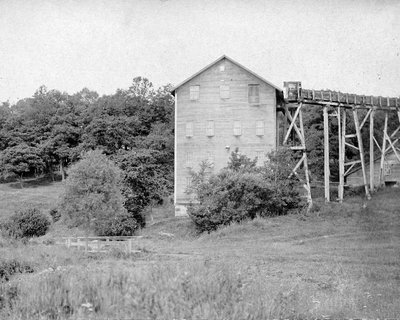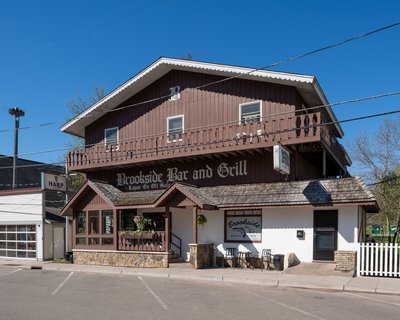Historic Views of Judd Street
The view from this spot looking north along Judd Street was often photographed during Marine Mills’ development. Below are photographs from this viewpoint taken between 1870 to 1910.
1870
One of the earliest photographs of Marine Mills is a tintype that looks north on Judd Street from just south of its intersection with Maple Street. This photo was taken shortly after the future Marine General Store (on the far right) was constructed by the lumber company partnership of Orange Walker, Samuel Judd, and William Veazie. Looking up the right (east) side of the street from the store, there is, in order, the George B. Judd store, the former residence of Nelson Draper (another early store owner), the Lightner Hotel, and, at the top of the hill, Orange Walker’s residence. Moving down the left (west) side of Judd Street from Walker’s house, there is a lumber company building that became the Independent Order of Odd Fellows Hall and, at the bottom, Mermond’s Inn and Saloon. On the north hill behind Mermond’s is the Marine Township Hall in the upper village. Only Marine General Store and the Township Hall – now Stone House Museum – remain.
You can learn more about the history of buildings on the corners of Judd and Maple Streets at the History Spot at Marine General Store.
1890
By the 1890s, there were several new buildings on Judd Street. On the left in this Judd Street view is the future Westergren funeral parlor where the Marine Garage is today. On the right, the building with the bell tower is the Village Hall erected in 1888. South of it just across the Mill Stream on the sawmill reservation is the Wichman saloon and hotel, which had an on-site brewery. That building was torn down in the late 1950s, leaving the lot vacant.
Charles Westergren had a funeral parlor and photography business next to the blacksmith shop once owned by his father Ole Westergren. The building, originally used for “stock & storage” and “carriage painting,” remained a funeral parlor through the horse and buggy era. With the advent of automobiles, Westergren’s funeral parlor was converted to a garage by John Bymark in 1915.
Ed Walquist and Arnold Lindh bought Bymark’s garage in 1923, rebuilt it as the Marine Garage, and started selling gasoline in 1925. Ed, and later his son Bob Walquist, operated the garage into the 1970s. The garage & gas station continues to operate here under new ownership.
John Kaufman started a brewery in Marine Mills in 1856 on the sawmill reservation just south of the Mill Stream falls. Father and son John and Emil Graf expanded it to produce up to five hundred barrels of beer a season.
The property was sold to John Wichman and partner Henry Gartner in 1870. Wichman’s brewery, saloon and residence burned in 1886, but were quickly rebuilt. When fire destroyed Marine’s brewery, it was the final straw that pushed the town into purchasing a firefighting hand pumper.
The Wichman hotel and saloon later operated as the Bymark Hotel and then Karl Erikson’s Blackstone Hotel. It changed hands again in 1924 operating as Frank Huff’s Hotel St. Croix.
1900
Since early transportation was primarily by horse, one of the essential businesses in town was a livery. This Judd streetscape is the only known photograph of the livery stable, which was located where Marine Security State Bank is today (at left in the photo above). In this photo from around 1905, the livery was owned by Ed Carlson, whose sign hangs on the barn.
The livery on Judd was established by Adam Amos and S. Duane Gaskill in 1870. They began a stagecoach service to Stillwater that brought regular trips and a steady flow of mail. Dennis Olsen started operating the Marine Stage Line here about 1894. His covered wagon had curtains, an oil stove, and runners for winter travel. Round trip to Stillwater cost $1.
Dennis Olsen sold the stage to Ed Carlson in 1904, who needed a judge to get Olsen “to relinquish all business in the livery line in Marine.” The livery burned in 1907, but Carlson relocated his business to Parker St. and continued service until 1926 when cars made it obsolete.
1910
This Judd Street view was photographed sometime after the livery burned in 1907 and before the Marine Mills State Bank was built on that site in 1914. On the left are the blacksmith shops where Marine’s Fire & Rescue is located today. The blacksmith was established by the lumber company in the 1850s. On the right to the south of the Village Hall are separated carriage and pedestrian bridges over the Mill Stream.
The Judd, Walker & Co. lumber business opened a blacksmith shop here in the 1850s with James Solley as smithy. Immigrant Ole Westergren progressed from apprentice in 1855 to owner by 1860. Nels Root (Roth) bought the shops in 1895 and brought in his son Frank, who continued smithing here until well after automobiles arrived. Root finally “bowed to progress” and closed his shop in the late 1930s. The blacksmith building survives on a private residence where it was hauled up the north hill on old Fourth St. by a team of horses.
Today one of the state’s oldest all-volunteer fire departments in Minnesota is located on the blacksmith site. Marine Fire Dept. was officially organized in 1886 when the village purchased a new Rumsey hand pumper, which was kept in an engine house built into the new Village Hall in 1888. A new fire hall was built on the former blacksmith site in 1962 to accommodate the larger engines. Water for the fire engines is still pumped from the Mill Stream behind the hall.
Marine Mills was literally built around the Mill Stream, called Fall River by the local Ojibwe. When the lumber company pioneers searched the St. Croix River for a good sawmill location, they recognized that this site had the waterpower for a sawmill and a good river landing for collecting logs from upstream northern pineries and for shipping finished lumber to downstream markets. They built Minnesota’s first sawmill at the mouth of the Mill Stream, and the village of Marine Mills developed around it. The remains of the sawmill are just east of this spot in what is now the Minnesota Historical Society’s Marine Mill site. Be sure to visit it and take the self-guided walking tour.
— Andrew Kramer and the Marine Historic Signage Committee
